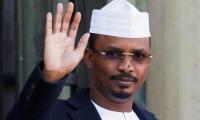October is a deceptive month in Karachi. Call it the city’s second summer. Meteorologists would tell you that October is the second hottest month of the year. There were times when educational institutions were closed for the entire month for ‘autumn vacations’.
But this year, October was the month of an exceptional flowering of social and cultural events that have underlined, in a sense, a renewed interest in saving the soul of this troubled city on the part of its concerned citizens. And the campaign is continuing in November.
At another level, Karachi is also in the throes of redefining its political identity, with the continuing erosion of the MQM – the party that for long had exercised veto powers in the affairs of the city. It would appear that Karachi is up for grabs as new alignments are forged before next year’s national elections.
Meanwhile, the reality of Karachi does stare you in the face. In terms of civic utilities and governance, it appears to be on the brink of a disaster. Or is it that this disaster is already manifest in the daily lives of its citizens? See this in the mirror of Karachi’s traffic disorder in the absence of any mass or rapid transit system. This traffic chaos is becoming more intolerable every passing day.
In fact, the sufferings of commuters, including those who have their own conveyance, must be taking a heavy toll on the physical as well as the psychological health of a large number of Karachi’s citizens. If you are able to move around with ordinary people, you may detect signs of some form of a collective nervous breakdown.
Ah, but I was all set to celebrate a breath of fresh air in Karachi’s cultural environment and a spurt of activity on a number of fronts that certifies the commitment and grit of perhaps a widening group of social activists. For the past two weeks, Karachi has been alive with artistic and intellectual happenings, providing evidence of its vast potential for social development.
We should begin with a reference to the holding of the Karachi Biennale (KB17), which concludes today after a hectic and vastly participative round of activities for two weeks. This was the first event of its kind and was in the works for almost two years. Over 140 artists from Pakistan and across the globe responded to a common theme: witness.
KB17 presented free public exhibitions, screenings, and dialogue “for charting new movement through familiar spaces” in more than 12 different venues. It became a remarkable creative endeavour to witness Karachi “through the lens of art”. As KB17’s energetic CEO Nilofer Farrukh has stressed, Karachi “is unique for [its] persistently altering memory”. We have been assured that “Karachi is among the art world’s best kept secrets”.
It was fitting that the event was launched at the historic NJV School in the centre of a city that is now spread across vast settlements. It was also the main avenue of KB17 to, as stated in the official document, “give easy access to new audiences and also bring into discussion Karachi’s history, which has been often overshadowed by tensions of rapid growth”.
During its times of troubles, Karachi has generally baffled its observers. It has provided a great deal of incitement to writers and poets. KB17 is the celebration of its truly vibrant art scene. To quote from the brochure, “art as a testament of its time has always held significance, particularly in times when memory is heavily contested”.
Since I am taking a wide-angled view of the current social scene of Karachi, I need to mention a number of other significant and meaningful initiatives that portray a deepening concern about the state of the city and its future among thoughtful and creative citizens. I also find it reassuring that most of the events that attracted attention were the result of local enterprise and national sponsors.
So, the Karachi Conference was held at the Arts Council last weekend. It was the fifth edition of a structured and penetrating exploration of the problems and prospects of the city. This year, it expanded its programme to, as a published report summed up, “incorporate discourse on the arts, politics and civic matters, and has tried to capture a small flavour of the city and present it through its speakers and panelists”.
An extensive backdrop to the proceedings was provided by veteran journalist and human rights defender I A Rehman who, in his keynote address, analysed the role of Karachi in the genesis of Pakistan. I was present in that session and felt gratified by the well-researched interpretation of Pakistan’s history in the context of Sindh’s specific cultural, linguistic, political and geographical identity.
I should also mention the day-long seminar, titled ‘Preserving Karachi’s Heritage: Challenges and Opportunities”, that was held last week. It was organised by the Institute of Architects Pakistan and though Karachi’s architectural heritage was under scrutiny, I found a presentation by British architect Henry Squire to be quite enlightening.
Leading a third-generation architectural practice in London, he explained how heritage and modernity work together. He said that heritage is more than just preserving buildings. It also defines a city’s or a people’s living cultural identity. Culture and identity, he said, are things that “are more esoteric and difficult to put a hand on unlike the physical manifestation of a building”.
Last weekend, Karachi was also the venue for the second Sindh Literature Festival and it was an important event that projected the city’s identity and its cultural strength. For two days, a large and animated audience enjoyed a literary feast in which more than 100 writers, scholars and media persons were featured. The idea was to champion Sindh’s culture and celebrate its literature. While the focus was mainly on literature in Sindhi, ample space was also given to other languages, including Urdu and English.
Finally, I have to allude to a large and select gathering that was billed as the national dialogue on reviving Karachi. Take it as the political dimension of Karachi’s yearning for survival as a modern city. It was attended by Sindh Governor Muhammad Zubair and prominent leaders of various political parties. It was organised by the Nutshell Forum on a rather ambitious scale.
Is there hope for Karachi? “The fact remains that we are in a dilemma,” said the governor. Far from the precincts of art and culture, he was speaking about more tangible challenges such as the safe disposal of waste, massive traffic congestion and environmental degradation.
The writer is a senior journalist.
Email: ghazi_salahuddin@hotmail.com
Another common thing that happens in Pakistani society is tendency for young children to go to bed very late, even on...
2025 climate action agenda must rectify this by embedding climate action in national and provincial planning documents
Starmer came up with strong reaction on Monday, condemning Musk’s increasingly erratic attacks on government
Prolonged slowdown erodes credibility of Pakistan’s IT sector on the global stage
Role of UN in peacekeeping must also be strengthened to ensure stability in region
America’s economic and technological prowess is rooted in its willingness to embrace risk, foster innovation, and...







